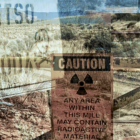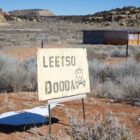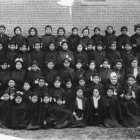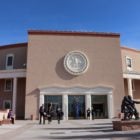This week the U.S. Interior Department released a 100-page report on the lasting consequences of the federal Indian boarding school system. You might recall last June Interior Secretary Deb Haaland, an enrolled member of the Laguna Pueblo, announced the federal agency would investigate the extent of the loss of human life and legacy of the federal Indian boarding school system, a chapter of U.S. history many Americans know little to nothing about.
This week’s report is the first of possibly many, and it deserves to be read by as many Americans as possible.
Here are some of the investigation’s top-level findings:
Beginning in the late 1800s, the federal government took Indian children from their families in an effort to strip them of their cultures and language.Between 1819 and 1969, the U.S. operated or supported 408 boarding schools across 37 states (or then-territories), including 21 schools in Alaska and 7 schools in Hawaii. Of those 37 states, New Mexico had the third-greatest concentration of facilities, with 43, trailing only Oklahoma and Arizona. The schools “deployed systematic militarized and identity-alteration methodologies to attempt to assimilate American Indian, Alaska Native, and Native Hawaiian children through education, including but not limited to the following: (1) renaming Indian children from Indian to English names; (2) cutting hair of Indian children; (3) discouraging or preventing the use of American Indian, Alaska Native, and Native Hawaiian languages, religions, and cultural practices; and (4) organizing Indian and Native Hawaiian children into units to perform military drills.The Federal Indian boarding school system focused on manual labor and vocational skills that left American Indian, Alaska Native, and Native Hawaiian graduates with employment options often irrelevant to the industrial U.S. economy, further disrupting Tribal economies.
Boarding schools in New Mexico got an early start.Two years after the first boarding school, the Carlisle Indian School in Pennsylvania, opened in 1879, the Presbyterian Church opened the Albuquerque Indian School (AIS) for Navajo, Pueblo and Apache students. Later, the school transferred to federal control.The Albuquerque Indian School merits several mentions in this week’s report, including five photos as I counted them of young Indigenous girls and boys in class, and of the building itself.
Department of the Interior, Bureau of Indian Affairs, Albuquerque Indian School, 1947-ca. 1964 (most recent
creator). (ca.









